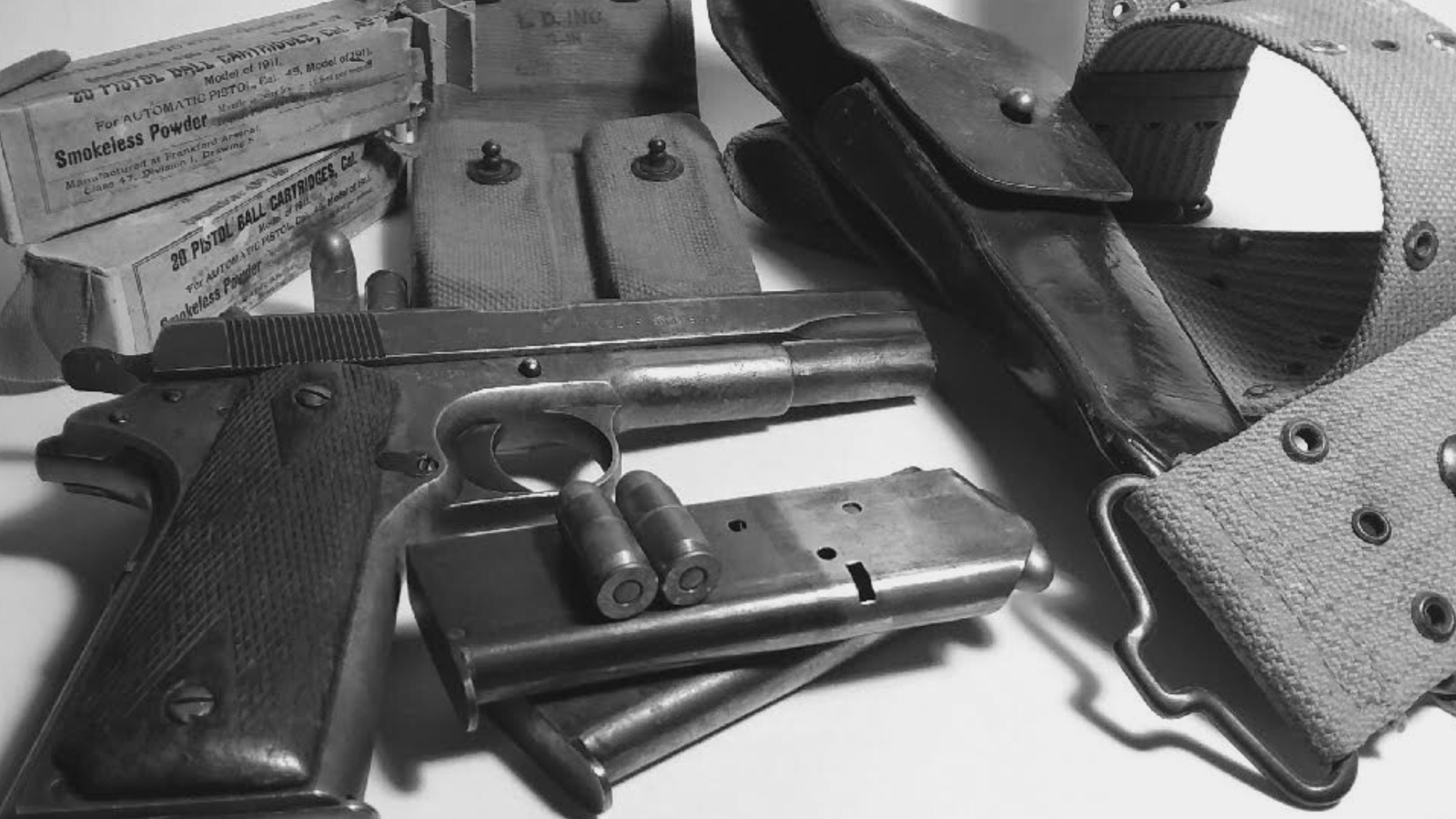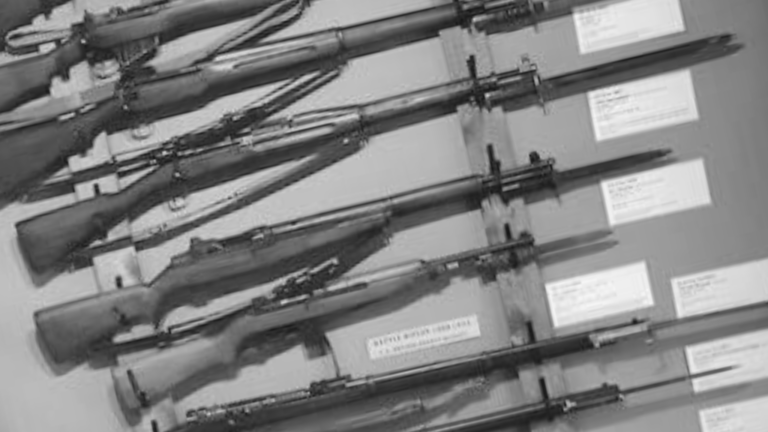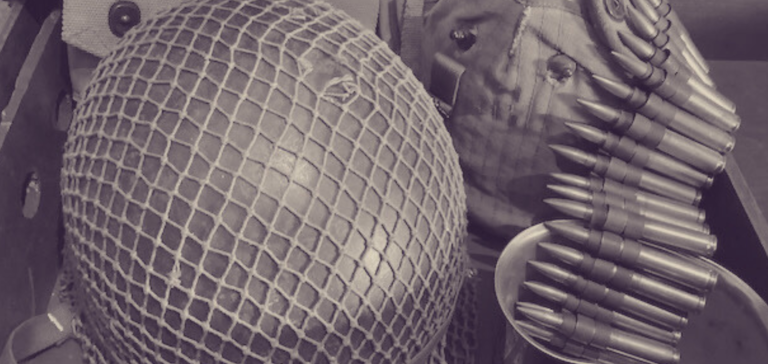The Search for Rare Military Artifacts Explodes
We continue our collecting journey with Episode 5 –
The notion of being a collector wasn’t formed in the first month of acquisitions. That changed on the first day of the following month.
And that came from reading about small arms from the world wars and seeing photos in articles and online ads which caused me to accelerate my pace in collecting rare military artifacts. It hit me that I was actively, and aggressively, collecting.
When I had met with the seller of the Garand, the month before, we stood in his garage where he showed me how to field strip it. He also proudly showed me the shiny M-1911 he was wearing under his shirt tail. Even though I barely possessed the M1, I made a mental note that a wartime 1911 would be a stellar collectible.
Little did I know that just weeks later, I would find one. And not a modern shiny 1911, nor a WWII 1911A1, but one almost a hundred years old, made in 1918, and with its original two-tone magazine.
It was for sale (not auction) by a pawn shop in South Georgia for less than $1,000. That sounded very reasonable so I jumped on that and felt so lucky to have found it. I had experienced “the thrill of the hunt”.

My unarticulated guardrails, thus far, were that the collectibles would be centered around small arms and their accessories.
During my first month of collecting, a book I was perusing showed a photo of the Lee-Enfield No 1 Mk III in the hands of American troops newly arrived in WWI England. The stubby steel nose cap at the end of the barrel had a quirky look that I liked.
At first, I thought, no, I have a Lee-Enfield, but I learned there were three types. One I already had. I pictured the trio as a collection within my collection. It took little time to find this other one, at a modest price, so I jumped on it.

Having this, and the Mk 4 No. 1 left only the No. 1 Lee-Enfield, aka “Long Lee”, which is less common.
There’s also a shortened jungle version of the Lee-Enfield, but I was only interested in collectibles from the European theatre.
This was driven home months later when I accidentally bought a Japanese Arisaka rifle that made me inexplicably depressed. It felt wrong to stray from the ETO. That’s probably why I lacked interest in the jungle Lee-Enfield.
So, an additional guardrail. No Pacific War stuff. The seller, who had encouraged me to buy the Type 99 Arisaka, was kind enough to let me return it. So, you learn what your parameters are, without having to think too hard about it.
The rest of that first year was primarily focused on small arms, bayonets with scabbards, stripper clips, magazines and ammo.
The collection was defined, at that point, as all the official battle rifles used in Europe by the U.S., Britain and Germany, and made from around 1890 through 1945.
A couple of classic German pistols were also allowed. Over the first year, I was able to fill in most, but not all, of the blanks I wanted to fill.
During that time, reading up on all these weapons exposed me to all the accouterments that went along with them, starting with cartridge belts, then straps, bags, canteens, compasses, caps, helmets and pretty much everything a soldier wore into combat.
I did make a conscious decision to focus on those items, originally intending just WWII U.S. I needed to learn what all those items were. That was an unavoidably slow process that ended up taking years, and which ended up stretching my parameters.







2 Comments